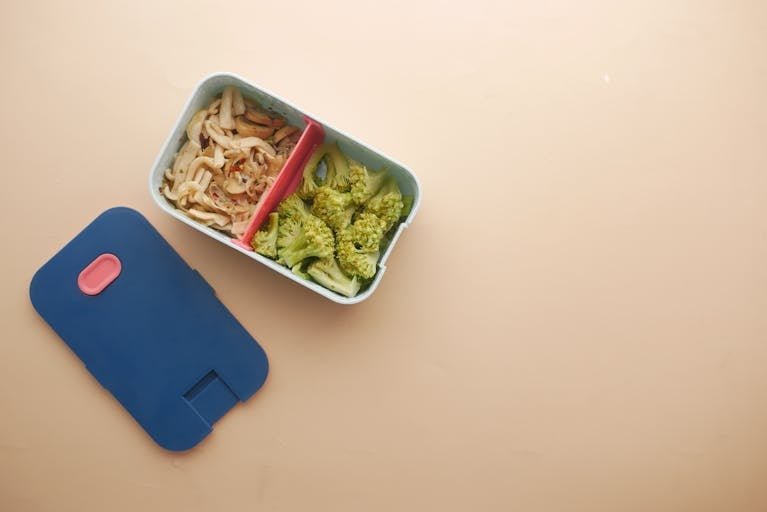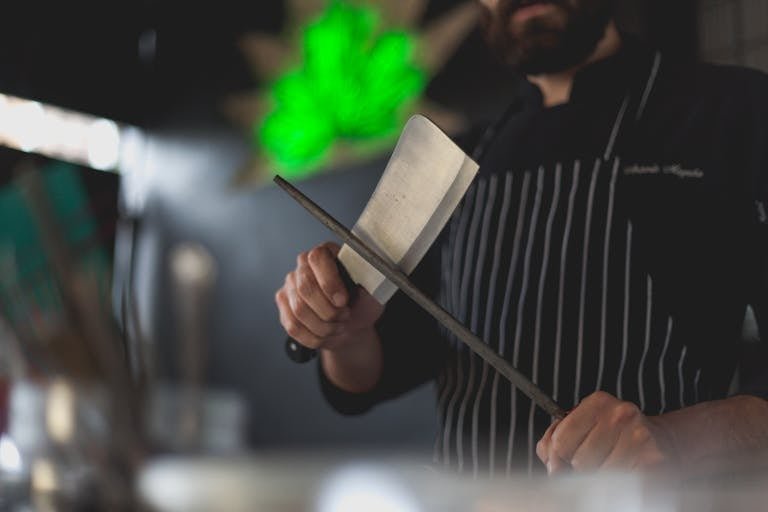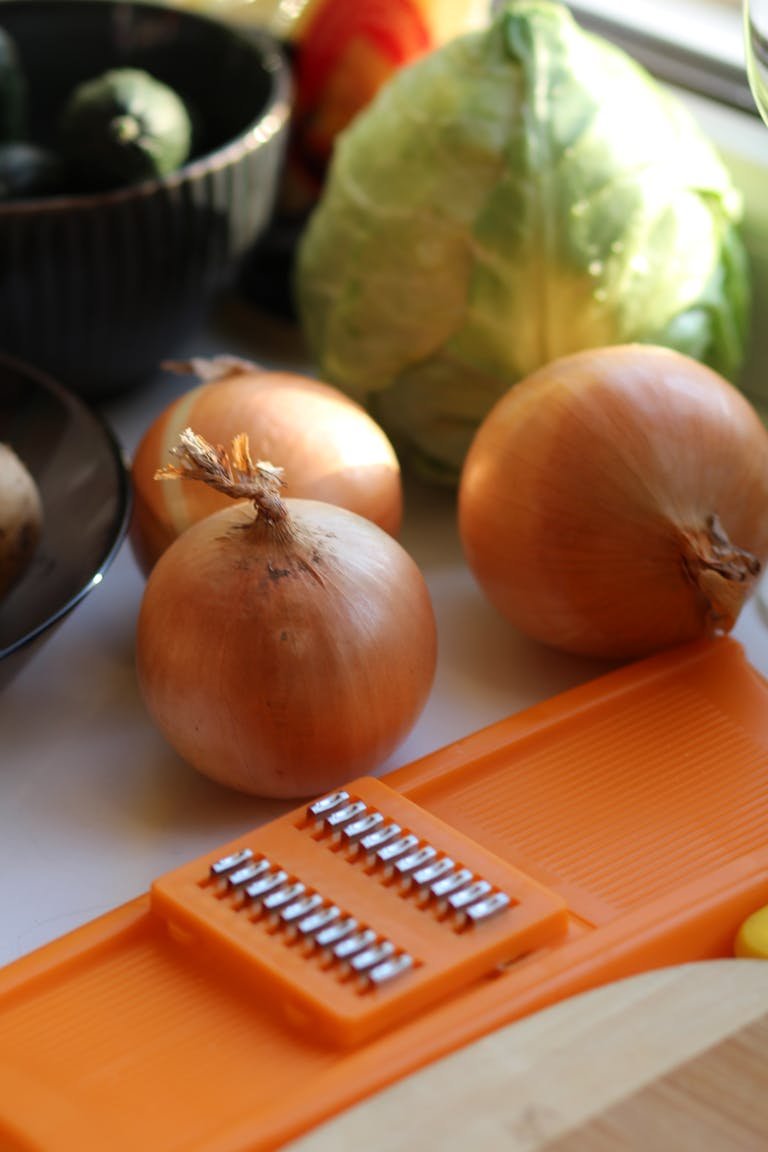Top 3 Organic Bamboo Cutting Boards: An Eco-Friendly Kitchen Essential
Discover the top organic bamboo cutting boards for sustainable cooking. Compare eco-friendly options, maintenance tips, and expert advice for your green kitchen

Did you know that the average household discards around 3-4 plastic cutting boards each year, leading to over 100 million plastic boards ending up in landfills? I came across this eye-opening statistic when I began my quest for a more sustainable kitchen, and it completely transformed how I view cooking tools!
As someone who cares deeply about cooking and the environment, I’ve used my share of different types of cutting boards. However, since I made the switch to organic bamboo cutting boards, I haven’t looked back! The transition hasn’t always been easy, but I’m eager to share everything I’ve learned about these fantastic eco-friendly kitchen essentials.
How Environmentally Friendly are Bamboo Cutting Boards?
I want to share an incredible experience I had when I visited a bamboo grove in China. It was truly astonishing! These amazing plants can grow up to 91 centimeters in just one day. That’s right! While my oak cutting board took decades to grow, bamboo reaches full maturity in only 3 to 5 years.
At first, I was a bit doubtful about how durable bamboo would be. Could it really handle my everyday chopping and dicing? You might be surprised to learn that bamboo is actually 16% harder than maple! I’ve been using my main organic bamboo cutting boards for four years now, and it’s still in excellent condition.
Are bamboo cutting boards sustainable?
The environmental benefits are impressive. Bamboo:
- Produces 35% more oxygen than similar trees
- Doesn’t need pesticides or fertilisers to thrive
- Has natural antimicrobial properties
- Regenerates from its own roots, so there’s no need for replanting.
Are Bamboo Cutting Boards Better Than Plastic?
Here’s the science behind the claims. I was initially doubtful about some of the claims surrounding bamboo boards, so I decided to explore the research. What I discovered was quite interesting: A study published in the Science Direct revealed that bamboo has a natural antimicrobial agent known as “bamboo kun.” This means your organic bamboo cutting boards are actively combating bacteria while you use it!
Why Choose Bamboo Over Other Woods?
When it comes to durability, lab tests have indicated that bamboo:
- Is 16% harder than maple wood
- Absorbs 35% less water than hardwoods
- Exhibits 50% less knife scarring compared to traditional wooden boards
From my own experience, I can confirm this – I’ve noticed significantly fewer deep knife marks on my organic bamboo cutting boards compared to my previous wooden ones.
Top 3 Organic Bamboo Cutting Boards for Every Kitchen Need
After testing numerous boards, here are my top picks:
Professional Grade: Royal Craft Wood Organic Bamboo Cutting Board
I truly rely on this board for my everyday cooking. The deep juice grooves have saved my countertops countless times when I’m preparing juicy tomatoes! It’s a bit on the expensive side, but the quality makes it worth every cent.
Budget-Friendly: Freshware Bamboo Cutting Board Set
This 3-piece set is fantastic for beginners. I actually started with this set myself, and the smallest board is still my go-to for quick tasks like chopping herbs. A good price for three boards, it’s an incredible deal!
Large Family Size: Extra Large Bamboo Cutting Board by Greener Chef
This enormous board (45×60 cm) is ideal for large family meals. I use mine when I’m meal prepping for the week or during holiday cooking marathons. The side handles make it easy to maneuver, even when it’s piled high with chopped vegetables.
| Feature | Royal Craft | Freshware | Greener Chef |
|---|---|---|---|
| Size | 45×30 cm | 30×20 cm | 45×60 cm |
| Thickness | 2 cm | 1.5 cm | 2.5 cm |
| Juice Groove | Yes | No | Yes |
| Price | $$ | $ | $$$ |
| Best For | Daily Use | Beginners | Large Prep |
How Thick Should a Bamboo Cutting Board Be?
I learned this the hard way when I bought my first bamboo board – size really does matter! I initially purchased a small board thinking it would save counter space, but it turned out to be completely useless for preparing family meals. Here’s what I’ve discovered to look for:
Thickness is key – aim for at least 1.5 cm for stability. My first thin board warped after just a few weeks because I didn’t know any better! Now, I always choose boards that are at least 2 cm thick.
Look for boards with:
- End-grain construction for better knife friendliness
- Deep juice grooves (trust me, they’re lifesavers!)
- A smooth, splinter-free surface
- Non-slip feet or a naturally grippy surface.
How Do You Clean a Bamboo Cutting Board?
To keep organic bamboo cutting boards in great shape, it’s essential to treat it like the natural material it is. Here’s my daily routine that has kept my board looking beautiful for years:
Daily Care:
- Quick Clean: Wipe it down with a damp cloth after each use.
- Thorough Dry: Make sure not to let water sit on the surface.
- Vertical Storage: This helps the board breathe and prevents warping.
I’ve found that having a dedicated drying station next to my sink makes this routine much easier. I simply use a dish rack turned sideways—nothing fancy, but it works perfectly!
How do you remove stains from bamboo cutting boards?
- Sprinkle coarse salt on the board.
- Scrub it with half a lemon.
- Rinse it thoroughly.
- Let it dry completely.
- Apply a thin layer of food-grade mineral oil.
How often should I oil my bamboo cutting board?
Monthly maintenance helps keep your organic bamboo cutting board lasting a lot longer. Make sure you:
- Deep clean using hydrogen peroxide.
- Give it a full oiling treatment.
- Check for any signs of wear.
- Buff it with beeswax (optional but highly recommended).
What oil is best for bamboo cutting boards?
I’ve had great success with Daddy Van’s All Natural Beeswax Conditioning Oil. It’s a bit on the pricey side, but a little goes a long way!
How Do You Season a New Bamboo Cutting Board?
I still remember the first time I seasoned my first organic bamboo cutting boards. I grabbed some olive oil since it was the only thing I had on hand. That turned out to be a big mistake! It went rancid within a few weeks, leaving my board with a terrible smell. Here’s what I’ve found works best:
The Perfect Seasoning Recipe:
- Start with a completely clean, dry board.
- Warm your food-grade mineral oil slightly (I usually place the bottle in warm water).
- Apply it in circular motions using a lint-free cloth.
- Let it soak in for 4-6 hours.
- Wipe off any excess and repeat monthly.
Common Mistakes to Avoid With Your Bamboo Cutting Board
Oh, the mistakes I’ve made! Let me save you some heartache (and money) by sharing the biggest blunders to avoid:
Can bamboo cutting boards go in the dishwasher?
I once tossed my brand new bamboo board in the dishwasher because I was feeling lazy. Don’t make the same mistake! The intense heat and moisture can ruin the board’s natural antimicrobial properties and likely lead to warping.
Do bamboo cutting boards need special care?
Not all oils are the same! Avoid these common household oils:
- Olive oil (it can go rancid)
- Vegetable oil (it tends to get sticky)
- Coconut oil (it can turn sour)
Instead, opt for food-grade mineral oil or specialised cutting board oil. Trust me, it’s worth spending a little extra!
How do you prevent bamboo cutting boards from warping?
Leaving your board flat on a wet counter is asking for trouble. I learned this the hard way when one of my favorite boards developed mold underneath! Always store your board vertically and ensure there’s good air circulation.
Making the Sustainable Switch to Bamboo
After trying out numerous cutting boards and learning from my mistakes, I can confidently say that organic bamboo cutting boards are worth every cent. They’re not only better for the environment, but they also serve as fantastic kitchen tools that can last for years if cared for properly.
Remember those 100 million plastic boards sitting in landfills? By choosing bamboo, you’re helping to reduce that number. Plus, you’ll have a beautiful, durable cutting board that’s naturally antimicrobial and gentle on your knives.
Why not take that first step toward a more sustainable kitchen today? Your future self (and the planet!) will appreciate it. And I’d love to hear about your experiences with organic bamboo cutting boards in the comments below—share how your new eco-friendly kitchen companion is working out for you!






